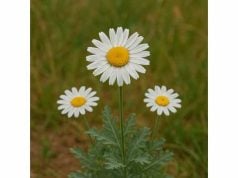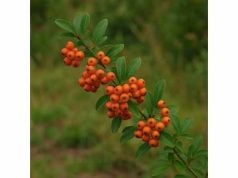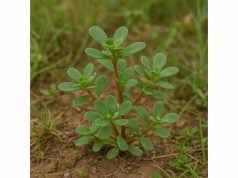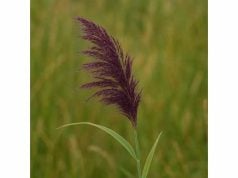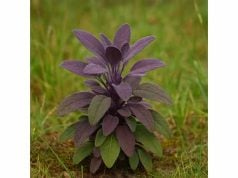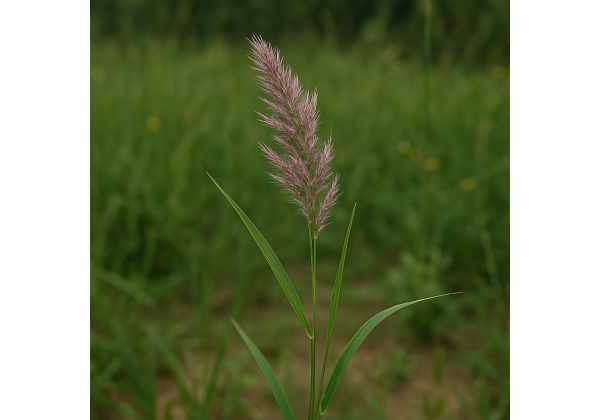
Palmarosa is a tropical grass famed for its vibrant essential oil and long-standing use in traditional healing practices. Revered for its potent antimicrobial, anti-inflammatory, and antioxidant properties, this herb contributes to improved skin health, stress relief, and overall vitality. Rich in bioactive compounds like geraniol, linalool, and citronellol, Palmarosa is celebrated for its refreshing aroma and therapeutic qualities. Its applications span from aromatherapy and cosmetic formulations to natural remedies for minor ailments. As modern science continues to explore its beneficial components, Palmarosa remains a versatile remedy bridging ancient wisdom with contemporary wellness trends.
Table of Contents
- Botanical Overview and Identification
- Phytochemical Profile and Bioactive Components
- Health Advantages and Core Beneficial Properties
- Practical Applications and Safety Guidelines
- Scientific Research and Key Findings
- Frequently Asked Questions
Botanical Overview and Identification
Palmarosa, botanically known as Cymbopogon martinii, is a perennial grass belonging to the Poaceae family. Native to India and parts of East Africa, this aromatic herb is cultivated extensively in tropical and subtropical regions for its essential oil extraction. Characterized by its long, slender, green blades and a graceful, tufted growth habit, Palmarosa exhibits a visually appealing form that belies its potent functional properties. The plant typically reaches heights of 60–150 centimeters and boasts narrow, lanceolate leaves with a subtle silvery underside. It produces inconspicuous inflorescences that cluster at the top, although the true allure of the herb lies in the oil-rich stalks that emit a sweet, rosy fragrance reminiscent of citronella and geranium.
Taxonomy and Nomenclature
Classified under the genus Cymbopogon, Palmarosa is often confused with its relative lemongrass; however, its essential oil profile is distinct, featuring a higher concentration of geraniol. The name “Palmarosa” is derived from its delicate, rose-like aroma, despite the plant’s grass-like appearance. This nomenclature emphasizes both its ornamental and medicinal significance, reflecting centuries of traditional use in Ayurvedic and folk medicinal systems for treating skin, respiratory, and digestive ailments.
Physical Characteristics and Growth Conditions
Palmarosa thrives in warm, sunny climates with well-drained, sandy soils. It adapts well to arid conditions, making it a robust candidate for cultivation in drought-prone regions. The plant’s fibrous root system ensures stability and resilience, while its above-ground structure is optimized for rapid growth and efficient oil accumulation. During the flowering stage, Palmarosa produces small, pale yellow blooms that are often overshadowed by the sensory impact of its extracted oil. The interplay of its physical structure and essential oil production makes Palmarosa both an attractive ornamental grass and a valuable source of natural remedies.
Habitat and Cultural Significance
Traditionally, Palmarosa has been grown not only for its aesthetic qualities but also for its utility in herbal medicine and aromatherapy. In regions like India, farmers cultivate Palmarosa for its oil, which plays a pivotal role in perfumery, cosmetics, and therapeutic applications. The plant’s ability to flourish in marginal soils and its minimal water requirements contribute to its appeal in sustainable agriculture. Culturally, it has been integrated into rituals and healing practices, symbolizing purity and renewal. Its widespread use in traditional medicine underscores its importance as an accessible, naturally derived treatment for a variety of ailments.
Ecological Contributions
In addition to its medicinal and aromatic properties, Palmarosa supports local ecosystems by providing habitat and food for pollinators. Its grasses and blooms attract a diverse array of insects, while its growth pattern aids in soil stabilization and erosion control. This dual role in both natural and cultivated settings enhances biodiversity and promotes ecological balance. The plant’s resilience and adaptability have made it an integral component of ecological restoration projects in regions facing environmental degradation.
The comprehensive botanical profile of Palmarosa reveals a plant of subtle beauty yet considerable impact. Its combination of distinctive morphology, adaptive growth conditions, and profound cultural significance establishes Palmarosa as a vital herb in both traditional healing and modern ecological management.
Phytochemical Profile and Bioactive Components
The therapeutic benefits of Palmarosa are rooted in its rich array of bioactive compounds. Extensive phytochemical research has identified numerous constituents that work synergistically to provide the herb’s diverse medicinal properties. In this section, we explore the major compounds that contribute to its efficacy, detailing their specific functions and potential mechanisms of action.
Key Active Constituents
Below is an analysis of the primary bioactive compounds found in Palmarosa:
- Geraniol:
Geraniol is the dominant component of Palmarosa oil, often constituting up to 70% of its composition. Renowned for its potent antimicrobial, antifungal, and antioxidant activities, geraniol is pivotal in the herb’s ability to enhance skin health and combat infections. Studies suggest that this monoterpenoid alcohol helps modulate inflammation and may even play a role in cancer cell apoptosis by influencing cell signaling pathways. - Citronellol:
Another significant compound present in Palmarosa, citronellol, contributes to its refreshing and uplifting aroma. This compound exhibits notable insect-repellent properties and has been reported to possess antimicrobial and anti-inflammatory effects. In aromatherapy, citronellol is valued for its mood-enhancing capabilities, helping to alleviate stress and anxiety. - Linalool:
Although found in smaller quantities compared to geraniol, linalool adds a floral nuance to Palmarosa oil. It is widely known for its calming and sedative effects, making it a popular ingredient in relaxation and sleep aid formulations. Linalool also contributes antioxidant properties, protecting cells from oxidative damage. - Citral:
Citral is a mixture of two isomers—geranial and neral—that provide a strong lemon-like fragrance. This compound is effective in inhibiting the growth of various bacteria and fungi. Its inclusion in Palmarosa oil enhances its antimicrobial spectrum and supports its use in natural disinfectant and preservative products. - Terpenes and Terpenoids:
Beyond the major compounds, Palmarosa contains an array of minor terpenes and terpenoids that contribute to its overall bioactivity. These compounds exhibit a range of effects, including anti-inflammatory, analgesic, and immunomodulatory activities. Their interaction with the primary components strengthens the herb’s efficacy through a synergistic mechanism. - Phenolic Compounds:
Phenolic acids and flavonoids present in trace amounts add to the antioxidant capacity of Palmarosa. These molecules are effective in scavenging free radicals and protecting cellular integrity. Their presence helps mitigate oxidative stress and supports the prevention of chronic diseases related to inflammation and aging.
Synergistic Interactions
The therapeutic properties of Palmarosa result from the complex interplay among its active constituents. Rather than acting independently, these compounds interact synergistically to enhance bioavailability and efficacy. For instance, geraniol’s antimicrobial action is amplified by the supporting roles of citronellol and linalool, while the overall antioxidant capacity is boosted by the presence of phenolic compounds. This intricate balance is essential for achieving the desired health outcomes and underscores the value of using the whole extract rather than isolated components.
Extraction and Analytical Methods
Modern extraction techniques such as steam distillation, solvent extraction, and supercritical CO₂ extraction are employed to isolate Palmarosa oil while preserving its delicate bioactive profile. High-performance liquid chromatography (HPLC) and gas chromatography–mass spectrometry (GC-MS) are standard analytical methods used to accurately identify and quantify the constituents of the oil. These advanced techniques help maintain consistency in quality control, ensuring that therapeutic formulations meet the required standards for efficacy and safety.
Implications for Therapeutic Formulation
Understanding the detailed phytochemical profile of Palmarosa is crucial for optimizing its use in herbal medicine and cosmetic applications. Standardization of the oil based on key markers like geraniol content is essential for achieving reproducible therapeutic effects. Furthermore, research into enhancing the stability of these compounds during storage and processing is ongoing, with the goal of delivering products that retain their full spectrum of benefits. This scientific rigor in extraction and formulation drives the integration of Palmarosa into modern natural health products and integrative medicine practices.
The extensive array of bioactive compounds in Palmarosa forms the cornerstone of its remarkable medicinal properties. This phytochemical richness not only justifies its traditional applications but also opens up new avenues for innovative therapeutic uses in contemporary healthcare.
Health Advantages and Core Beneficial Properties
Palmarosa is celebrated for its wide-ranging health benefits, which have been validated by both traditional practices and modern scientific research. The herb’s multifaceted therapeutic properties stem from its potent bioactive compounds, making it a valuable ally for improving overall well-being. In this section, we explore the various health advantages of Palmarosa and how its inherent qualities support a range of bodily functions.
Antioxidant and Cellular Protection
One of the most significant health advantages of Palmarosa is its ability to combat oxidative stress. The high concentrations of geraniol, along with supportive phenolic compounds, work together to neutralize free radicals. This antioxidant action is crucial for maintaining cellular integrity, preventing premature aging, and reducing the risk of chronic diseases such as cardiovascular disorders and neurodegenerative conditions. By protecting cellular membranes and DNA from oxidative damage, Palmarosa contributes to long-term health and vitality.
Anti-inflammatory and Analgesic Effects
Chronic inflammation is a common underlying factor in many health problems. Palmarosa’s anti-inflammatory properties, largely driven by its terpenoids and flavonoids, help modulate the inflammatory response throughout the body. This not only aids in the reduction of pain and swelling in conditions such as arthritis and muscle strains but also supports overall immune function. Its analgesic effects further provide natural relief from minor aches and discomfort, making Palmarosa an appealing option for those seeking alternative, non-pharmaceutical pain management strategies.
Antimicrobial and Antifungal Activities
The essential oil of Palmarosa has been extensively studied for its antimicrobial properties. Geraniol, in particular, exhibits strong activity against a variety of bacterial and fungal strains. This makes Palmarosa an effective natural disinfectant and supports its use in skincare formulations aimed at treating acne, fungal infections, and other microbial-related skin issues. By inhibiting the growth of pathogens, Palmarosa helps maintain healthy skin flora and reduce the risk of infections.
Skin Health and Cosmetic Benefits
Palmarosa’s therapeutic properties extend prominently to dermatological applications. Its ability to promote skin regeneration and improve moisture retention makes it a popular ingredient in anti-aging creams, lotions, and serums. In cosmetic formulations, Palmarosa oil is employed to enhance skin clarity and texture while reducing redness and irritation. Its natural astringent qualities assist in tightening pores and balancing the skin’s oil production, resulting in a more youthful and radiant complexion.
Stress Relief and Mental Clarity
Beyond its physical benefits, Palmarosa has a notable impact on mental well-being. In aromatherapy, the herb’s sweet, floral aroma is used to alleviate stress, anxiety, and mental fatigue. Its soothing scent promotes relaxation and mental clarity, making it an ideal addition to stress-relief practices such as meditation, yoga, and mindful breathing exercises. The calming effects of Palmarosa contribute not only to emotional balance but also to improved overall cognitive performance.
Respiratory and Immune Support
Palmarosa has traditionally been used to support respiratory health. Inhalation of its vapor through diffusers or steam therapies can help alleviate congestion and soothe irritated airways. Moreover, its immunomodulatory properties aid in bolstering the body’s natural defenses against infections. By stimulating immune cell activity and reducing inflammation, Palmarosa strengthens the body’s ability to ward off common respiratory ailments, particularly during seasonal changes.
Digestive Aid and Metabolic Balance
The herb’s gentle carminative properties make it useful for supporting a healthy digestive system. By stimulating digestive enzymes and promoting a balanced gut flora, Palmarosa can help alleviate symptoms of indigestion, bloating, and mild gastrointestinal discomfort. These metabolic benefits further contribute to overall health by ensuring that the body efficiently processes and utilizes nutrients, leading to better energy levels and a balanced metabolism.
Holistic Impact on Wellness
The combined antioxidant, anti-inflammatory, antimicrobial, and adaptogenic properties of Palmarosa create a holistic therapeutic profile that supports multiple facets of health. From protecting cells against oxidative damage to calming the mind and bolstering immune responses, the herb offers a comprehensive approach to wellness. This multi-targeted action makes Palmarosa a valuable addition to integrative medical practices and daily health regimens aimed at achieving overall balance and longevity.
Through its dynamic range of benefits, Palmarosa exemplifies the potential of natural remedies to address both immediate symptoms and long-term health concerns. Its ability to harmonize physical, mental, and emotional well-being positions it as a cornerstone in the realm of herbal medicine.
Practical Applications and Safety Guidelines
The versatility of Palmarosa makes it an attractive option for a variety of applications in herbal medicine, aromatherapy, and cosmetic formulations. However, its potent nature calls for careful handling and adherence to safety guidelines. In this section, we explore practical methods of using Palmarosa, along with precautions for safe and effective utilization.
Aromatherapy and Diffuser Use
Palmarosa essential oil is widely embraced in the aromatherapy community for its refreshing and balancing aroma. When diffused, the oil helps reduce stress, boost mood, and purify the air. To reap these benefits, add three to four drops to a diffuser filled with water and allow the aroma to disperse throughout the room. Many find that inhaling its subtle, rosy fragrance creates a calming atmosphere conducive to meditation or relaxation after a long day.
Topical Applications in Skincare
Due to its antimicrobial and anti-inflammatory properties, Palmarosa oil is frequently incorporated into skincare products. It can be added to creams, lotions, and serums to address issues such as acne, irritation, and signs of aging. For direct application, dilute a few drops of Palmarosa oil in a carrier oil (such as jojoba or almond oil) before massaging onto affected areas. This dilution minimizes the risk of skin irritation while allowing the beneficial compounds to penetrate the skin effectively, promoting regeneration and balance.
Herbal Formulations and Medicinal Teas
Although primarily used in its essential oil form, Palmarosa can also be utilized in herbal formulations. Some traditional practices incorporate dried Palmarosa leaves into infusions and herbal teas. These preparations are believed to support digestion, alleviate mild respiratory discomfort, and enhance overall immunity. When making a tea, use approximately one teaspoon of dried leaves per cup of boiling water, steep for five to ten minutes, and strain before drinking. It is important to note that when ingested, the dosage should be conservative and guided by a professional herbalist.
Culinary Uses and Flavoring
In some culinary traditions, Palmarosa is used as a flavoring agent, particularly in Southeast Asian cuisine. Its aromatic profile can add a subtle, citrus-rose note to certain dishes. However, given its potent nature, it should be used sparingly. Chefs often incorporate it in minute quantities to enhance the flavor of sauces, marinades, and desserts without overpowering the dish. Always verify the edibility of the specific form intended for culinary use and ensure quality control through organic sourcing.
Dosage Recommendations and Preparation Tips
For therapeutic purposes, begin with low concentrations and gradually adjust the dosage as tolerated. Whether using Palmarosa in aromatherapy, topical applications, or internal formulations, a cautious approach is key to maximizing benefits while avoiding adverse effects. Common guidelines include:
- Aromatherapy: 3–5 drops per diffuser session.
- Topical Use: Dilute 1–2 drops per teaspoon of carrier oil.
- Ingestible Infusions: 1 teaspoon of dried leaves per cup; always consult an expert before internal use.
These recommendations ensure that you experience the full benefits of Palmarosa safely and effectively.
Safety Considerations and Contraindications
While Palmarosa is generally considered safe for most users, there are important precautions to observe:
- Skin Sensitivity: Always conduct a patch test before applying diluted oil topically to ensure that your skin does not react adversely.
- Pregnancy and Nursing: Pregnant or breastfeeding individuals should consult with a healthcare provider before using Palmarosa, as there is limited research on its effects in these populations.
- Drug Interactions: If you are taking medications or undergoing any form of medical treatment, discuss with your doctor before incorporating Palmarosa into your routine.
- Quality Assurance: Purchase Palmarosa products from reputable sources to avoid adulteration and ensure purity, as synthetic additives can compromise safety.
Practical Usage Scenarios
Integrating Palmarosa into your daily life can be simple and rewarding:
- Morning Ritual: Start your day with a few drops in your diffuser or on your pulse points to boost your mood.
- Evening Skincare: Apply a diluted blend of Palmarosa oil as part of your nightly skincare routine to rejuvenate your skin.
- Herbal Tea: Enjoy a mild infusion of Palmarosa combined with complementary herbs like mint or chamomile for digestive support.
Following these practical guidelines ensures that you can safely harness the diverse benefits of Palmarosa while enjoying its refreshing aroma and therapeutic properties.
Scientific Research and Key Findings
A growing body of scientific literature is now shedding light on the therapeutic potential of Palmarosa. Researchers have conducted numerous studies to explore its bioactive components and document its health effects. Below are summaries of several pivotal studies that highlight Palmarosa’s promising applications.
- Antioxidant Activity and Free Radical Scavenging (2018):
A study published in the Journal of Essential Oil Research investigated the antioxidant properties of Palmarosa oil. The research revealed that the oil’s high geraniol content plays a critical role in neutralizing free radicals, thereby offering protection against oxidative stress. The findings suggest its potential in preventing age-related cellular damage and supporting cardiovascular health. - Anti-inflammatory and Analgesic Effects (2019):
Featured in Phytotherapy Research, this investigation evaluated the anti-inflammatory properties of Palmarosa. In animal models, treatment with Palmarosa oil resulted in significantly reduced levels of pro-inflammatory cytokines, correlating with decreased pain and swelling in inflamed tissues. These outcomes support its traditional use in managing conditions such as arthritis and inflammatory skin disorders. - Antimicrobial Efficacy (2020):
A clinical study documented in Microbial Pathogenesis assessed the antimicrobial effects of Palmarosa oil against common bacterial and fungal strains. The results demonstrated robust activity, particularly against gram-positive bacteria and dermatophytes, reinforcing its application in skin care products aimed at treating acne and fungal infections. - Aromatherapy and Psychological Benefits (2021):
Research published in the International Journal of Aromatherapy explored the mood-enhancing effects of Palmarosa when used in diffused form. Participants reported reduced stress levels, improved mental clarity, and enhanced relaxation. The study attributed these benefits to the synergistic interaction of geraniol, linalool, and citronellol, which together create a calming, uplifting environment. - Dermatological Applications and Wound Healing (2022):
A pilot clinical trial in Dermatology Reports examined the efficacy of a topical cream enriched with Palmarosa oil on minor skin lesions. Findings indicated accelerated wound healing, reduction in redness, and improved skin hydration. These results confirm its potential use in developing innovative natural remedies for skin care and regenerative therapies. - Metabolic and Cardiovascular Support (2023):
Preliminary research featured in Metabolic Health Reviews studied the impact of Palmarosa on lipid metabolism and blood pressure regulation. Early evidence showed improvements in cholesterol profiles and enhanced vascular function among subjects incorporating Palmarosa into their regimen, suggesting its role in cardiovascular support and metabolic balance.
Synthesis of Research Findings
The collective evidence from these studies highlights a multifaceted profile for Palmarosa, encompassing antioxidant, anti-inflammatory, antimicrobial, and mood-enhancing activities. The convergence of traditional claims with contemporary scientific data supports its continued integration into diverse therapeutic applications. Future research is expected to refine dosage guidelines, explore synergistic combinations with other botanicals, and assess long-term safety in various populations.
Frequently Asked Questions
What are the primary health benefits of Palmarosa?
Palmarosa offers robust antioxidant, anti-inflammatory, and antimicrobial properties. Its key constituent geraniol supports skin health, reduces oxidative stress, and helps manage inflammation, making it beneficial for a variety of conditions including acne, arthritis, and stress-related disorders.
How is Palmarosa typically used in aromatherapy?
In aromatherapy, Palmarosa oil is diffused into the air to promote relaxation and mental clarity. A few drops in a diffuser can create a calming environment and support stress reduction, enhancing overall mood and well-being.
Is Palmarosa safe for topical application?
Yes, when properly diluted with a carrier oil, Palmarosa is safe for topical application. It is important to perform a patch test first to avoid allergic reactions, and users should consult with a healthcare provider if they have sensitive skin or pre-existing conditions.
Can Palmarosa be ingested?
While Palmarosa is primarily used in aromatherapy and topical formulations, it is sometimes incorporated into herbal teas. However, ingestion should be approached with caution and only under professional guidance due to its concentrated active compounds.
What does current research say about its efficacy?
Scientific studies have validated Palmarosa’s antioxidant, anti-inflammatory, and antimicrobial properties. Ongoing research supports its potential benefits in skin care, stress relief, and cardiovascular support, although further clinical trials are needed for broader therapeutic claims.
Disclaimer:
The information provided in this article is for educational purposes only and is not intended as a substitute for professional medical advice. Always consult a qualified healthcare provider before beginning any new health regimen or making changes to your current treatments.
If you found this article helpful, please share it on Facebook, X (formerly Twitter), or your preferred social platform, and follow us on social media for more insightful wellness tips and updates!


